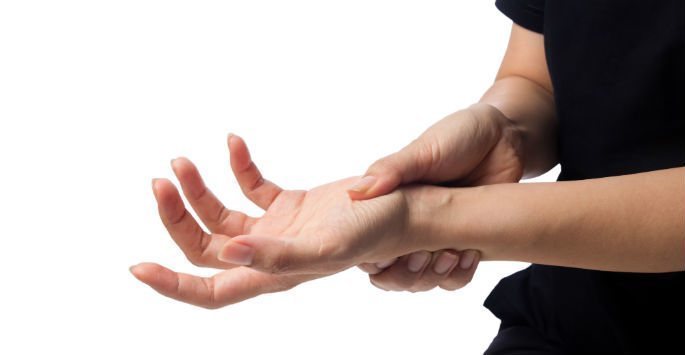The wrist is made up of eight small bones that connect to the ulna and radius in the forearm. The connection between these bones makes it possible to freely move your wrist. Breaking any of these 10 bones near the hand will be classified as a fractured wrist. The pain and discomfort caused by a fractured wrist usually makes the condition very easy to diagnose. However, there are some common signs to look for when your wrist is fractured.
Recent Traumatic Accident or Fall
If you have strong and healthy bones, then it is very hard to fracture your wrist without a traumatic accident or fall. Fractured wrists are extremely common in automobile accidents because your instinct is to put up your hands before crashing. This puts your wrist in the perfect position to break after colliding with the steering wheel or air bag. It is also entirely possible to break your wrist by falling on the ground. The bones in your wrist break because they are unable to support your body weight as you attempt to stop the fall. If you are experiencing pain in your hands and wrist after an accident or fall, then there is a very good chance that your wrist is fractured.
Severe Pain and Bruising
Severe pain and bruising is the biggest sign that you have suffered a serious injury. If your severe pain gets worse as you attempt to extend or flex your wrist, then you likely broke one of the bones near your wrist. The pain will also intensify if you attempt to grip or squeeze an item. Some people think broken bones make it impossible to move the injured area, but that is not true. You will likely be able to move your wrist while it is fractured, but this movement will be limited and painful.
Deformity of the Wrist
Breaking one of the bones in your wrist will commonly make your wrist look odd and deformed. The trauma that caused the fractured wrist will create a lot of swelling in the area. This can make the wrist appear much bigger than normal. A bad injury to the wrist can also knock a bone out of place. This will make the wrist look bent or crooked. Something is seriously wrong with your wrist if it starts to look deformed, so you will want to get it checked out by our doctor as soon as possible.
Numbness and Tingling in the Fingers
It is possible for a fractured wrist to damage the nerves in your hand. If this occurs, then you will likely experience numbness and tingling in your fingers throughout the day. The fingers can also become pale in appearance if the fractured wrist is limiting blood flow to the hand. The nerve issues are only going to get worse over time, so repairing the fractured wrist in a timely manner is the only way to prevent a long recovery process.
Treating Your Fractured Wrist
If you believe your wrist is fractured, make an appointment at Arora Hand Surgery in West Bloomfield, Howell, Warren, or Macomb. Contact us today to schedule a consultation to learn about your treatment options.
















